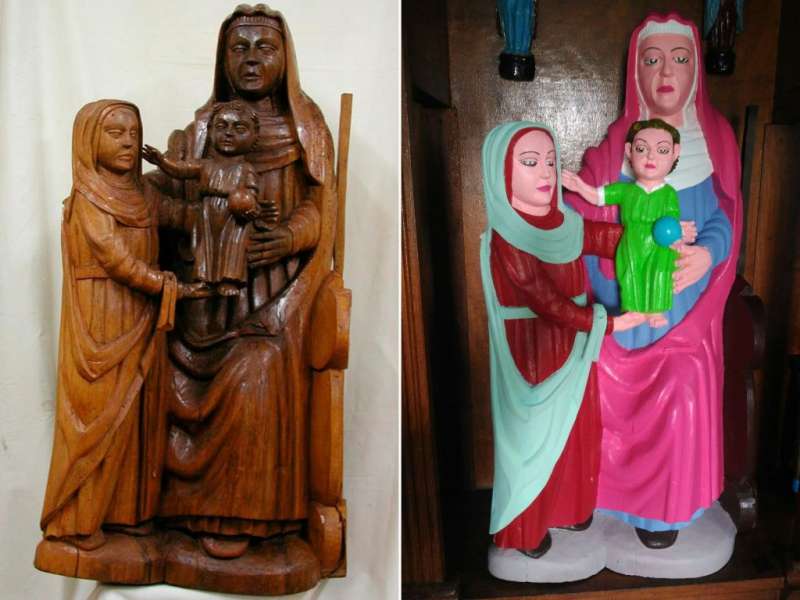In the third known act of egregious artistic restoration of Spanish Catholic art in recent history, a 15th century statue of Christ and Mary has been given a fresh - and loud - coat of paint, simultaneously sparking hilarity and outrage online.
The wooden statue, from a chapel in the village of El Ranadoiro, about 35 miles west of Oviedo, depicts Christ on the lap of who appears to be his grandmother, St. Anne, with his mother the Blessed Virgin Mary standing to the side.
The figures, once plain wood, now sport bright colors, with St. Anne in a hot pink veil and sky blue robes, Christ in lime green, and Mary in a light turquoise veil and deep red robes. Each face dons lined eyes and bold red lips; St. Anne’s fingernails are painted a muted pink.
Amatuer artist and local resident Maria Luisa Menendez said she offered her talents to the parish priest, who gave her permission to paint the statues. She also painted two smaller figurines in the parish collection, one of Mary holding Christ, and one of St. Peter, each with similarly bold strokes.
"I'm not a professional, but I always liked to do it, and the figures really needed to be painted. So I painted them as I could, with the colours that looked good to me, and the neighbors liked it," Menendez told local newspaper El Comercio, as quoted by AFP.
The saintly snafu has some comparing Menendez’ work to that of Cecilia Gimenez, who ‘restored’ the now-infamous Ecce Homo painting in Spain in 2012. Her fuzzy, monkey-like depiction of Christ spawned its own SNL skit and a comedic tributary opera, and continues to draw thousands of visitors a year from all over the world.
Luis Suarez Saro, who had restored the El Ranadoiro sculptures in 2002-2003 with local government approval, has called Menendez’ paint job “crazy.”
Suarez Saro told AFP that Menendez “likes to draw and paint, she did some courses... and she felt the sculptures looked better this way.”
Genaro Alonso, Councilor of Education and Culture of the Principality of Asturias, the region in which the statues are located, reacted strongly, telling local sources that Menendez’ work was “not a restoration, it was a revenge.”
Reactions to the restoration on Twitter ranged from the amused to the outraged.
Spanish art conservation group ACRE bemoaned the botching of yet another piece of historic Spanish art.
"Does no one care about this continued plundering in our country? What kind of society stands by as its ancestor's legacy is destroyed before its eyes," the group tweeted.
The incident also called to mind the uproar over a similarly botched statue earlier this summer, when a 16th century St. George statue was ‘restored’ by a local arts and crafts teacher in Estella, another town in northern Spain.
The bright colors and odd expression on the refinished statue’s face left some comparing it to the Belgian comic character Tintin.
“It shows a frightening lack of training of the kind required for this sort of job,” ACRE said at the time of the St. George restoration.

